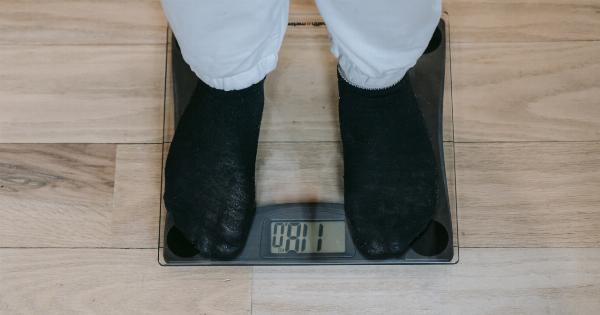Incontinence is a common condition that affects many people, particularly as they age. It refers to the involuntary loss of urine or feces, leading to embarrassing situations and a decrease in quality of life.
While there are several treatment options available for managing incontinence, one often overlooked strategy is adopting a healthy diet. Proper nutrition can play a significant role in improving bladder control and reducing the symptoms of incontinence. In this article, we will explore the importance of eating well to manage incontinence and discuss some key dietary considerations.
Understanding the link between diet and incontinence
There is a strong correlation between diet and urinary health. Certain foods and beverages can irritate the bladder, leading to increased urinary frequency, urgency, and leakage.
By identifying and avoiding these trigger foods, individuals with incontinence can experience significant improvement in their symptoms.
Hydration and incontinence
Staying adequately hydrated is crucial for overall health and bladder function. While it may seem counterintuitive, drinking enough water can actually help manage incontinence.
When you don’t drink enough fluids, urine becomes more concentrated, which can irritate the bladder and worsen incontinence symptoms. It is recommended to drink at least eight cups (64 ounces) of water per day. However, if you experience bladder irritability, it might be helpful to limit your fluid intake a few hours before bedtime.
Fiber-rich foods for bowel management
Incontinence is not limited to urinary issues; it can also involve fecal incontinence. Including an adequate amount of dietary fiber in your meals can promote regular bowel movements and prevent constipation, which can contribute to fecal incontinence.
Foods high in fiber include fruits, vegetables, whole grains, and legumes. Aim for at least 25-30 grams of fiber per day to keep your digestive system healthy.
Avoid bladder irritants
Several foods and beverages are known to irritate the bladder and can exacerbate incontinence symptoms. These bladder irritants vary from person to person, but common culprits include:.
- Alcohol
- Caffeine (coffee, tea, energy drinks, etc.)
- Citrus fruits and juices
- Carbonated drinks
- Spicy foods
- Artificial sweeteners
Individuals with incontinence should pay attention to their personal triggers and avoid consuming these bladder irritants as much as possible.
The role of weight management
Maintaining a healthy weight is beneficial for overall wellness and can also have a positive impact on incontinence management.
Excess weight can put pressure on the bladder and pelvic floor muscles, making them weaker and increasing the risk of urinary leakage. If you are overweight, adopting a balanced and calorie-controlled diet can help you shed those extra pounds and potentially improve incontinence symptoms in the process.
The importance of pelvic floor health
The pelvic floor muscles play a crucial role in bladder control. Strengthening these muscles can improve urinary continence and reduce the risk of leakage.
Along with dietary changes, it is essential to incorporate exercises that target the pelvic floor into your routine. Kegel exercises, for example, can enhance the strength and endurance of these muscles. Consulting a healthcare professional can provide you with guidance on the most effective pelvic floor exercises for your specific needs.
Key nutrients for bladder and pelvic floor health
A well-balanced diet that includes various nutrients is important for maintaining bladder and pelvic floor health. Here are some key nutrients to focus on:.
-
Vitamin C:
Vitamin C is known for its immune-boosting properties, but it also plays a role in supporting urinary health. It helps prevent urinary tract infections (UTIs) and enhances the function of the bladder and kidneys.
Citrus fruits, strawberries, bell peppers, and broccoli are excellent sources of vitamin C.
-
Calcium:
Calcium is vital for maintaining strong bones and muscles, including the pelvic floor muscles. Low calcium levels can contribute to muscle weakness, affecting bladder control.
Dairy products, leafy greens, and fortified plant-based milks are good sources of calcium.
-
Magnesium:
Magnesium helps regulate muscle function and can aid in relaxing the bladder muscles, reducing urgency and frequency of urination. It is found in nuts, seeds, legumes, and whole grains.
-
Omega-3 fatty acids:
Omega-3 fatty acids have anti-inflammatory properties, which can reduce bladder inflammation and irritation. Fatty fish (such as salmon and mackerel), flaxseeds, and walnuts are rich sources of omega-3s.
Implementing dietary changes and monitoring results
When making dietary changes to manage incontinence, it is essential to be patient and monitor the results. Keep a food diary to track your intake and the impact it has on your symptoms.
If you notice any worsening or improvement, you can adjust your diet accordingly.
Conclusion
While incontinence can be a challenging condition to manage, adopting a healthy diet can significantly improve symptoms and overall bladder health.
By hydrating adequately, consuming fiber-rich foods, avoiding bladder irritants, maintaining a healthy weight, and focusing on key nutrients, individuals with incontinence can regain control and lead a more comfortable life. It is important to remember that everyone’s body is unique, and what works for one person may not work for another.
Consulting with a healthcare professional or a registered dietitian will provide personalized guidance to address individual needs and optimize treatment outcomes.




























